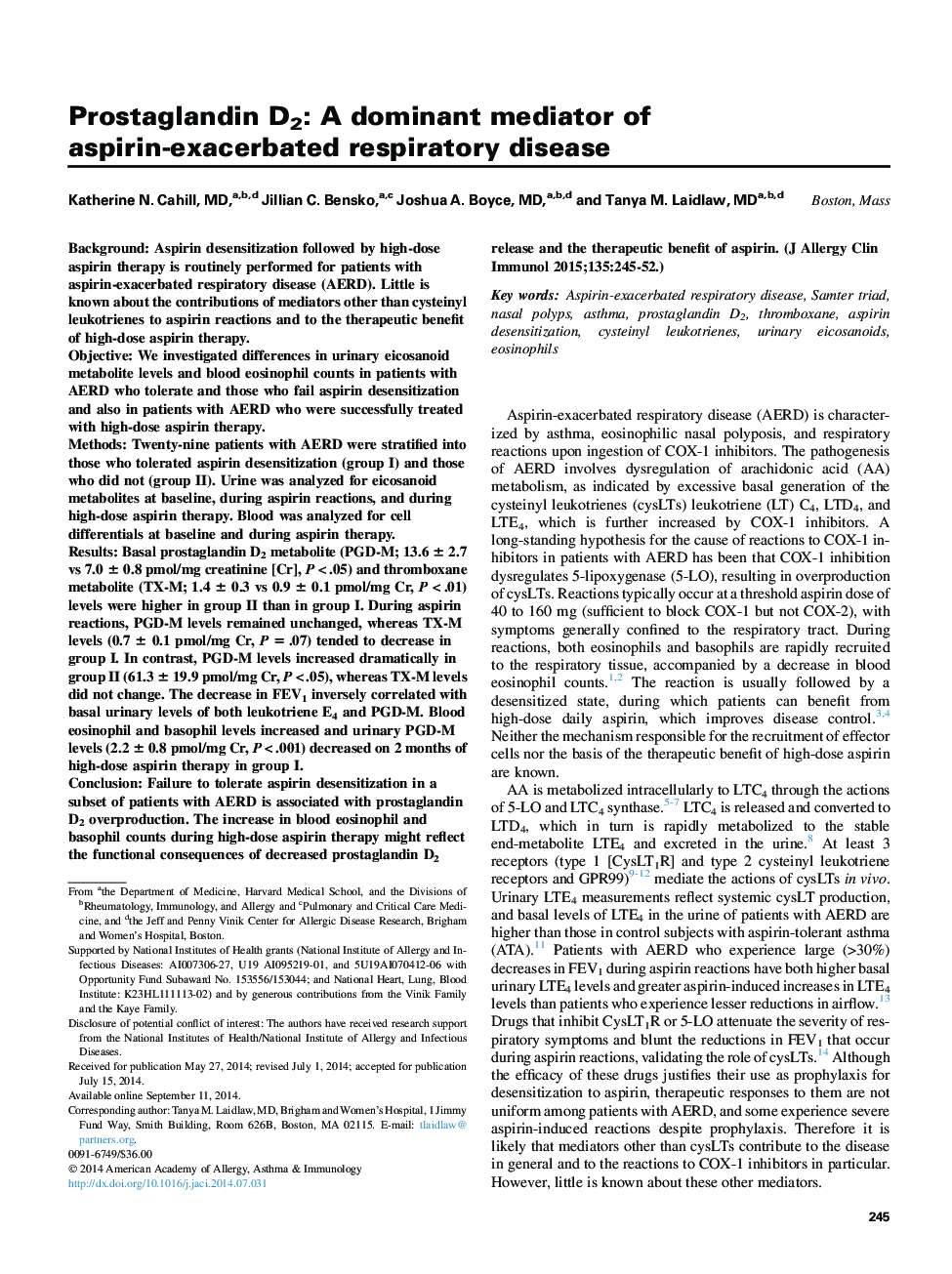| کد مقاله | کد نشریه | سال انتشار | مقاله انگلیسی | نسخه تمام متن |
|---|---|---|---|---|
| 6065579 | 1201873 | 2015 | 8 صفحه PDF | دانلود رایگان |

BackgroundAspirin desensitization followed by high-dose aspirin therapy is routinely performed for patients with aspirin-exacerbated respiratory disease (AERD). Little is known about the contributions of mediators other than cysteinyl leukotrienes to aspirin reactions and to the therapeutic benefit of high-dose aspirin therapy.ObjectiveWe investigated differences in urinary eicosanoid metabolite levels and blood eosinophil counts in patients with AERD who tolerate and those who fail aspirin desensitization and also in patients with AERD who were successfully treated with high-dose aspirin therapy.MethodsTwenty-nine patients with AERD were stratified into those who tolerated aspirin desensitization (group I) and those who did not (group II). Urine was analyzed for eicosanoid metabolites at baseline, during aspirin reactions, and during high-dose aspirin therapy. Blood was analyzed for cell differentials at baseline and during aspirin therapy.ResultsBasal prostaglandin D2 metabolite (PGD-M; 13.6 ± 2.7 vs 7.0 ± 0.8 pmol/mg creatinine [Cr], P < .05) and thromboxane metabolite (TX-M; 1.4 ± 0.3 vs 0.9 ± 0.1 pmol/mg Cr, P < .01) levels were higher in group II than in group I. During aspirin reactions, PGD-M levels remained unchanged, whereas TX-M levels (0.7 ± 0.1 pmol/mg Cr, P = .07) tended to decrease in group I. In contrast, PGD-M levels increased dramatically in group II (61.3 ± 19.9 pmol/mg Cr, P < .05), whereas TX-M levels did not change. The decrease in FEV1 inversely correlated with basal urinary levels of both leukotriene E4 and PGD-M. Blood eosinophil and basophil levels increased and urinary PGD-M levels (2.2 ± 0.8 pmol/mg Cr, P < .001) decreased on 2 months of high-dose aspirin therapy in group I.ConclusionFailure to tolerate aspirin desensitization in a subset of patients with AERD is associated with prostaglandin D2 overproduction. The increase in blood eosinophil and basophil counts during high-dose aspirin therapy might reflect the functional consequences of decreased prostaglandin D2 release and the therapeutic benefit of aspirin.
Journal: Journal of Allergy and Clinical Immunology - Volume 135, Issue 1, January 2015, Pages 245-252